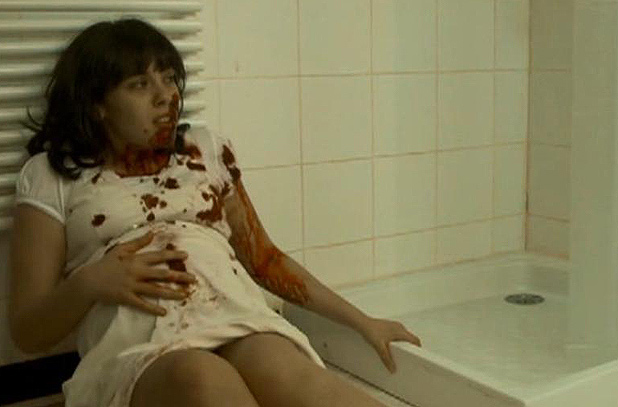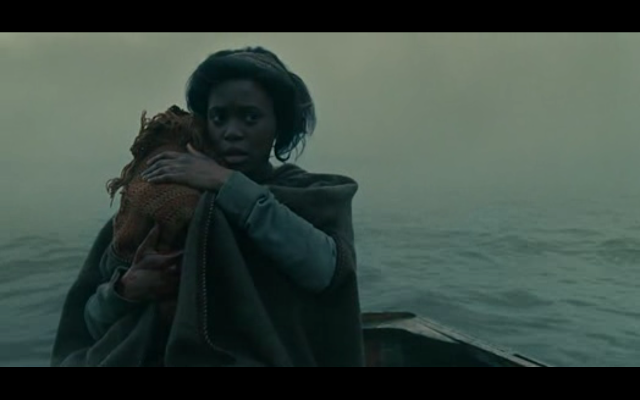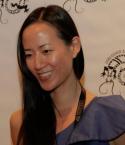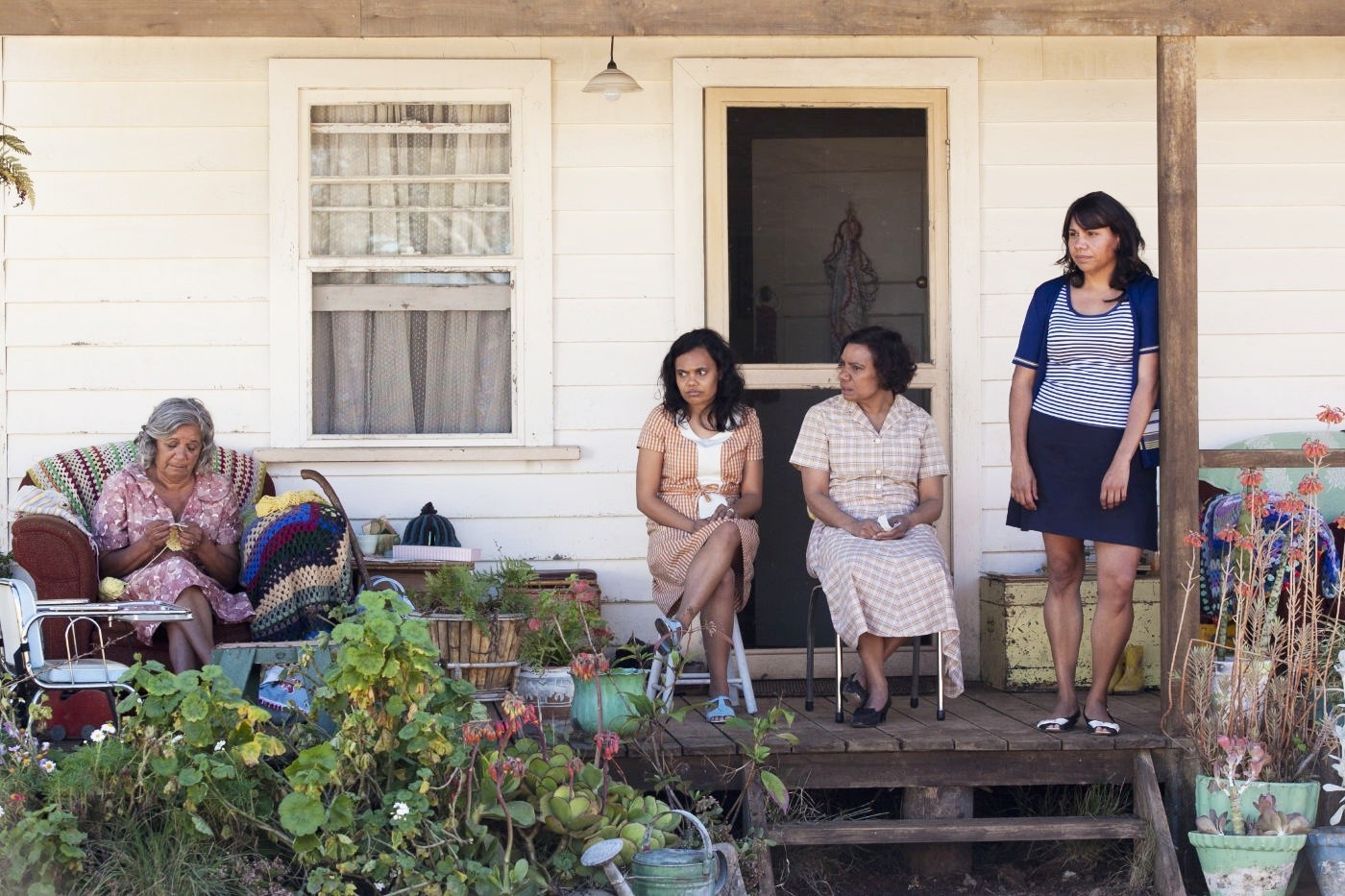 |
| Buffy talks to Spike about her pregnancy in the Season 9 comic |
The vampire in question mocks her, saying he can smell the sedatives, he can smell the baby, and it’s going to be easy to kill them both. Cue vampire dust, and Nikki’s Watcher Crowley rushing over to make sure she’s alright. Crowley thinks it’s unbelievable that the Council made her go through with rite of passage, given that she’s in such a “delicate condition.” Nikki brushes it off, telling him that the job doesn’t stop because her life got in the way. “In the meanwhile, can you at least tell me…who the father is?” says Crowley.
Cut to Buffy, present day, who’s just been asked the same question by Dawn. “I have no idea,” she says.
When the end of the first volume of Season 9 ended with Buffy’s positive pregnancy test, my faith in the comic book extension of Buffy came rushing back. After the TV show ended in Season 7, Joss Whedon and a group of other writers returned to the story in comic book form, but Season 8 bit off more than it could chew. Taking advantage of the unlimited scope (and reduced production costs) this new medium gave them, the comic book writers dreamed up alternate realities to their hearts’ content, and Season 8, while intriguing, was often hard to follow.
 |
| Dawn comforts Buffy in Season 9 |
So far, Season 9 has had a much smaller, more intimate focus. The world lost its connection to magic at the end of the previous season, something Buffy is responsible for. She’s living in San Francisco, trying to make ends meet by making coffee. As far as tone goes, it’s very reminiscent of Season 6—it’s about dealing with fallout, navigating uncertainty, and trying to figure out what survival means when you`re talking about the everyday instead of slaying monsters.
Buffy’s relationship to her pregnancy was a trigger that had the potential to change the story and the characters’ world fundamentally. The only parallel I can think of that comes close is the way Buffy`s life changed after her mother died, and she sacrificed herself to save Dawn at the end of Season 5. In the same way that those events set up Season 6, which was an incredibly compelling engagement with loss, depression, addiction, and responsibility, Buffy`s pregnancy opened up a storyline that looked like it would be a smart and painful discussion of reproductive choices, motherhood, agency, and trying to understand the future.
But here’s the thing: Buffy’s not actually pregnant.
Instead (in a bizarre, inexplicable, and incredibly frustrating plot twist) her consciousness has been transplanted to the Buffybot by Andrew, who’s taken it upon himself to give her a “normal” life by hiding her body away in a 50s-esque suburban paradise while an assassin hunts her robot replacement—without checking in with her or letting her know someone’s hunting for her, of course. The positive pregnancy test was apparently a by-product of the robot technology, but that’s an explanation that’s still lost on me. And though this leads to some really interesting explorations of “normalcy,” it reads to me like a missed opportunity of massive proportions.
The book had opened with a Buffy who had no idea how she felt about her pregnancy. She blacked out at a party, and she has no idea what happened or what might have been done to her (this, it turns out, was when Andrew’s body-switching hijinks ensued). She was beginning to undertake the difficult work of deciding what she wanted to do with her future and her body, and trying to reconcile her long-standing desire for normalcy with her anxiety about the uncertain circumstances under which her pregnancy occurred and her identity as a Slayer—which she realizes isn’t just a duty, it’s a drive.
 |
| Buffy asks Robin Wood about having a Slayer for a mother |
Buffy asks Robin Wood to give her his perspective on growing up with the Slayer for a mother. “If you want an easy answer, you won’t get it from me,” he tells her; his childhood was raw and painful, and he grew up knowing that his mother could have walked away from him, but she never could have walked away from the job. He tells her about learning about vampires and demons before he heard about the Tooth Fairy and about lying awake waiting for his mother to come home, about how he got more support and family from Nikki’s Watcher than he did from her. He’s not sure what to tell her. It’s fascinating watching Robin try to vocalize what he thinks his mother should have done—would he rather have had her put him up for adoption? Not try to have a family at all? He’s still harboring resentment toward his mother for the choices she made throughout his childhood, but he’s also not sure Buffy would be repeating history if she chose to keep her child—and he’s also deeply cognizant of the context in which his mother made the choices she did.
I loved this moment because it broadened the scope of the conversations we have about reproductive decisions to include the complexities of life after birth. For Nikki, and for Buffy, it’s not just about this do-or-die moment where you choose the kind of future you’re going to have. Reproductive choice is something that’s repeated and remade and takes on new weight throughout the years, and it’s just as applicable to questions about raising your child and choosing your family as it is to questions about adoption and abortion.
This is the line of questioning that drives Buffy’s reproductive decision. She’s been thinking about what kind of mother she could be, and whether she could turn away from her identity as the Slayer to pursue a different kind of future. That’s the decision that Nikki made when Robin was born, but her life away from slaying didn’t last long. “She got an itch before I was even a year old. And we ended up right back where Crowley didn’t want us,” Robin says. “Patrolling while I waited for the night she didn’t come home. It took me a long time to realize why. She was chosen, Buffy. Just like you. No matter where she went, no matter how much she wanted to be with me. She wasn’t strong enough to ignore it. She had to be a Slayer.”
 |
| A depiction of Buffy’s confusing universe in the Season 9 comic |
Buffy decides she could navigate the dual responsibilities of slaying and motherhood, but she also realizes that it wasn’t the only thing on her mind. Her decision also had to be about where she is in her own life, and about the fallout and tense relationships and financial responsibility she’s still trying to understand. She takes stock of where she is, and she’s not sure she’s ready to expand her chosen family to one that includes a child.
“It’s not the slaying. It’s me,” she says, sitting on the side of an abandoned pool with Spike. She’s going to have an abortion, and she asks Spike to come with her when she does it. Spike stands up and reaches for her hand. “Yeah,” he says, and nothing more. It’s a lovely, simple scene that speaks volumes to both of their characters and to how Buffy’s life and support system has changed since the TV show ended.
What I don’t understand is why after doing all of this heavy lifting and complex narrative development the writers chose to walk away. I loved this storyline, and I wanted to see them follow through with it. I wanted to see how Buffy’s relationship to her choices would evolve. I wanted to hear more from Robin Wood about how the choices he and his mother made complicate his continued involvement in this world. Though we do get to see an interesting exploration of Buffy’s loss and confusion after she realizes she was never pregnant, the weird fake-robot-pregnancy explanation feels far too convenient—and it points to some of my larger frustrations with sci-fi pregnancy storylines.
In the world of science fiction, a pregnancy is much more likely to be a flimsy excuse for deus ex machina than the beginning of a complex and nuanced exploration. Pregnancies happen and gestate overnight, and they lead to spiders that claw their way out of stomachs and babies whose blood is the cure for specific kinds of cancer or which opens portals. More often than not, these stories skip over any kind of emotional exploration of pregnancy, choice, or loss and fail to recognize that pregnancy often involves a difficult engagement with people’s own families, pasts, and fears.
There are some notable exceptions. But pregnancy should not be treated as a one-episode storyline, and reproductive decisions shouldn’t be introduced as monster-of-the-week plot twists.
What’s more, there are a lot of parallels between the 24-hour sci-fi pregnancy and the Convenient Miscarriage trope, in which characters who don’t want to have a child but don’t want to have an abortion miscarry at an opportune moment in the plot so they don’t have to make a decision. It’s a cop-out of a plot device, and the fact that it’s one of the dominant representations of miscarriage in pop culture is deeply problematic. Convenient Miscarriages gloss over an event many people experience as deeply traumatic and have a complicated relationship with, even if they’d been considering having an abortion.
 |
| Buffy tells Spike she’s having an abortion |
The rest of the comic wavers back and forth between this kind of Convenient Fake Pregnancy and a continued exploration of what this experience means for Buffy. She’s struggling to understand the loss of her pregnancy, and the writers’ exploration of what it means to lose a child you’d made the decision not to keep is compelling. She’s also sure this is one more piece of proof that she’s a failure at anything to do with the “real world,” and her coming to terms with the fact that what she thought was a real-world decision with real-world implications was just “more bizarre Slayer crap” is really moving.
And though I’m not wild about Buffy’s pregnancy being framed as a “fake problem,” I’m intrigued by this continued exploration of what she went through, even if it’s only happening in a partial and underdeveloped way. I just hope it has consequences for the story as a whole. This was a smart, complicated discussion of reproductive justice and what it means to make a family—until it wasn’t. I’m frustrated that in a plotline where Buffy was asked to make a decision about her body, she wasn’t even in her body, and the choice wasn’t actually hers to make. I wanted to see the scene where Buffy went to the clinic with Spike. I wanted to see if she chose something else. However interesting this exploration of normalcy and loss was, I wanted to see the writers commit to the way her pregnancy would have changed her fictional world, to follow through and show Buffy negotiating the trauma of her history and the uncertainty of her future. More than anything, I really, really wanted to read the story they just walked away from.























